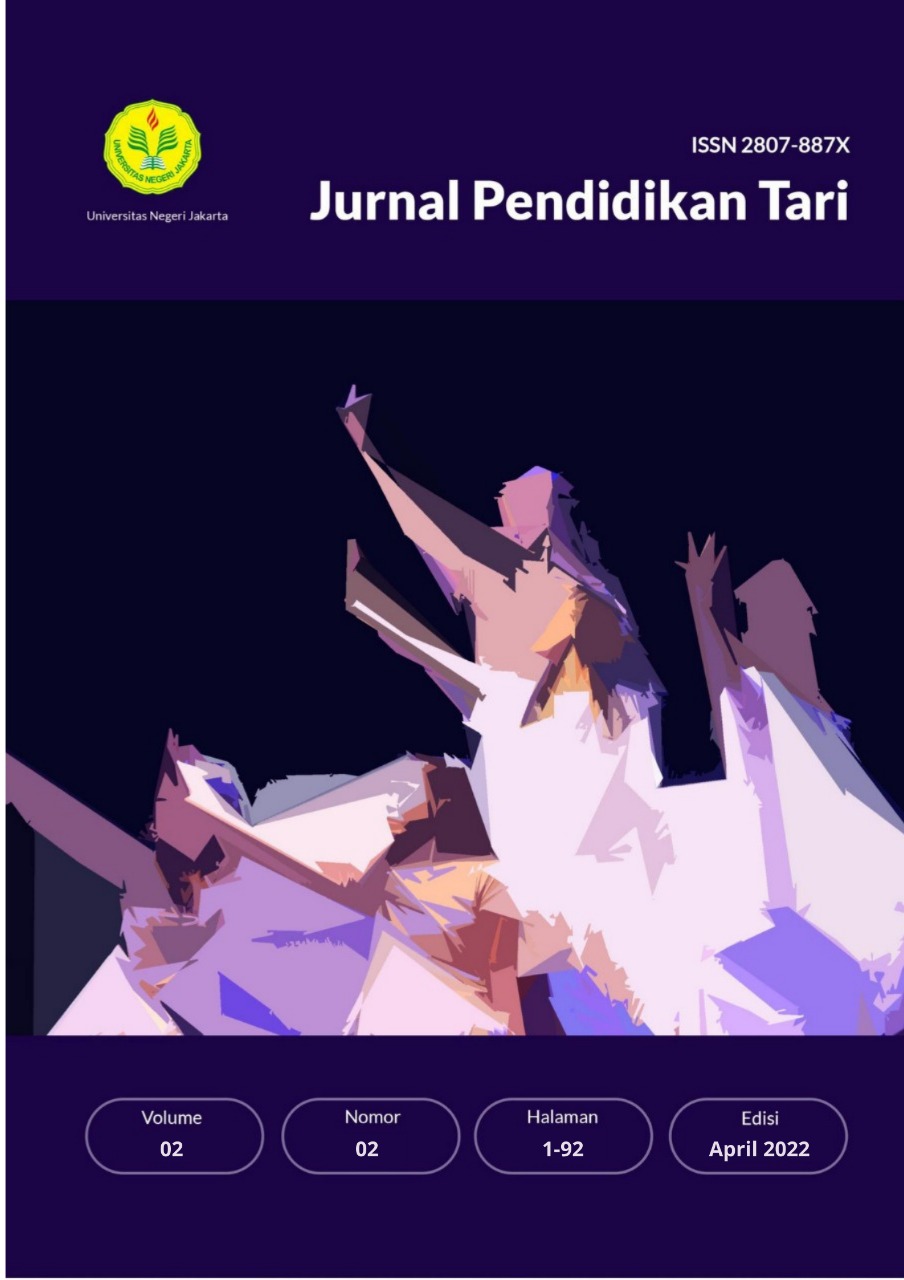Description of Women in Peranakan Culture Through the Creating of a Cokek Dance Work Title Nyai Cukin Era of Jakarta Tempo Doeloe
Abstract
Cokek is a Betawi art that has been influenced by Chinese leaders’ culture and that was born in the 18th century. Cokek dance in those days was fostered and developed by wealthy Chinese owners. The term Peranakan is defined as a result of mixed cultures; Chinese culture originating from Hokkien migrants in the southern provinces of China and the local culture.
The purpose of the research is to develop insight and knowledge about the Chinese Peranakan culture as one of the influencing elements on the Betawi culture, as well as the development of various disciplines such as dance, music, theater and scenography as a source of inspiration for dance creations based on the Cokek dance.
The analysis method uses a qualitative method with a Research and Development approach with 10 stages, but in this second phase of the research only uses 7 stages, namely: (1) Potential and Problems, (2) Literature Study and Information Gathering, (3) Product Design, (4) Design Validation, (5) Design Revision, (6) Initial Trial (7) Product Revision. The theory used is the theory of creation of Alma M Hawkins Moving from Within: A New Method for Dance Making in the translation of I Wayan Dibia Moving According to the Heart: A New Method of Creating Dance which consists of experiencing or expressing, seeing, feeling, imagining, manifesting, and forming.
Nyai Cukin Era Jakarta Tempo Doeloe was created in the form of a contemporary dance theater and uses 7 female dancers and 6 male dancers. It depicts women as Cokek dancers who can express their weary thoughts through joking while waiting for their partner in Kalijodo.


